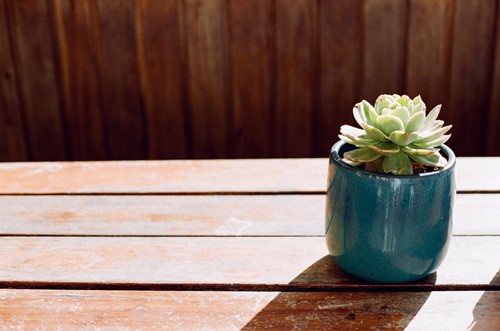
Succulents are some of the most popular houseplants because they are easy to care for. However, there are some very common problems that you might encounter when keeping succulents despite their low-maintenance demands. Each variety has slightly different needs, but here we will go over some of the most common issues and how to avoid them.
Sunburn
Succulents may be desert-native, but that does not mean they all thrive in direct sunlight. In fact, most succulents prefer bright but indirect light and can get damaged by harsh UV rays. If you notice brown spots or dry discoloration on your succulent’s leaves, it might be sunburn. If you find your succulent has sun damage, carefully remove the damaged leaves and find a new spot where the plant won’t burn. North or south-facing windows are great for succulents because they’ll get plenty of light all day without risk of damage.
Underwatering
“Low-maintenance” does not mean you can completely ignore a succulent. Though they are drought-resistant plants, they need enough water in order to survive and grow. The easiest way to tell if your succulent needs more water is if the upper leaves look shriveled and dry. You might also notice a usually vibrant succulent looking dull or gray when it needs more water. Luckily, this is an easy problem to remedy. All you need to do is to soak the soil completely and then allow it to drain. You should see the appearance change gradually once the plant has quenched its thirst.
Overwatering
Succulents frequently top the “hard to kill” list of houseplants, but the most common reason succulents die is from too much water. Desert native plants like succulents and cacti are extremely efficient in their water consumption and can store it for long periods of time. Watering your succulents too frequently can lead to root rot which will eventually kill the whole plant. If you notice the underside of the plant turning brown, it might be a sign of rot. Unfortunately, it’s difficult to save the plant once the roots have decayed, but it’s easy to prevent the issue entirely. The soil must dry out completely between waterings. You should also make sure you use the right soil: go for succulent or cactus-specific soil that drains well rather than soil that retains moisture.
Stretching
Sometimes your succulents might grow unevenly in one direction. If you notice your succulents stretching one way or the other, it means it’s trying to get more light. Plants will typically grow toward their light source, so if you have succulents facing the same direction in the same spot without ever being moved, you might find them getting stretched or “leggy.” The simplest way to avoid this is to rotate them frequently or find a new spot for them where the light is more consistent. You can also use special LED grow lights indoors to create a perfectly symmetrical lighting environment if you don’t get enough sunlight through your windows. Just make sure that if you change the amount of light for a leggy succulent that you do so gradually and watch out for sun damage.
Each type of succulent is a little different in terms of ideal light and water situation, but all share the risk of the above issues. The most important thing to remember when caring for succulents is not to drown them or expose them to extreme heat or cold. Otherwise, let the plant tell you what it needs and adjust accordingly.
About the Author

Claire Rainville
I have been conducting business in this local area for 20 years as a full-time real estate broker. My priority as a real estate broker is to ensure my client’s satisfaction through providing them top-class service specifically catered to their individual needs. As your agent, I will effectively communicate with other parties involved in your transaction to ensure the purchase or sale of your home/land/investment property goes smoothly. I use my high-touch philosophy and high-tech resources to attractively market my listings as a seller’s agent, and will proactively use my connections as an experienced real estate broker to find my clients’ their dream home. I am also available via phone, email or text messaging to accommodate my clients’ various schedules and/or preferred mode of communication.
